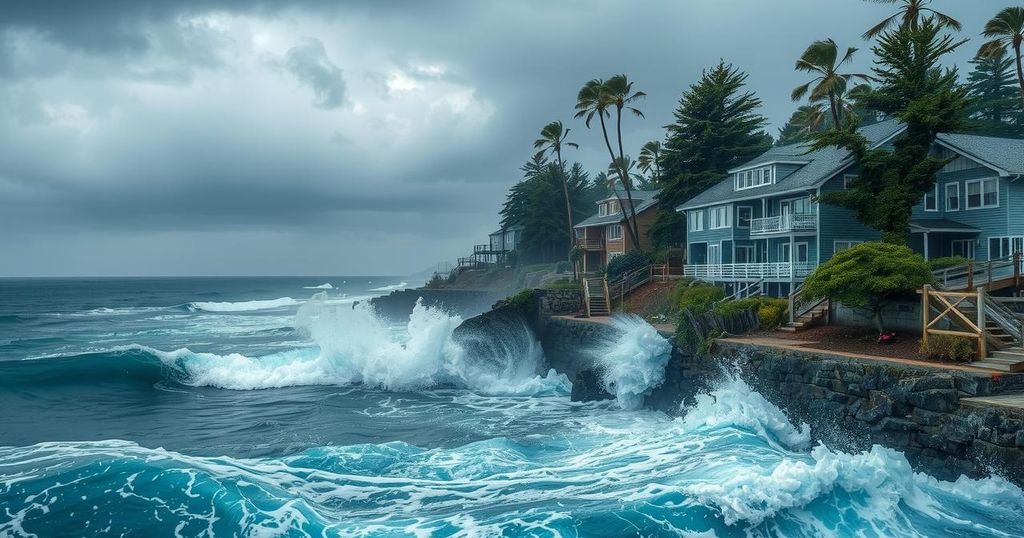Understanding Hurricane Alley: The Epicenter of Severe Storms
Hurricane Alley is a notable region in the Atlantic where hurricanes frequently form, impacting various coastal areas while also affecting underwater environments. Hurricanes are categorized by their wind speeds, with Category 5 storms representing the most severe potential for damage. While the hurricane season runs from June to November, the phenomenon affects marine ecosystems as well as land. Effective monitoring and understanding are essential for preparedness against these powerful storms in light of climate change.
Hurricanes manifest globally, yet Hurricane Alley represents a distinct area where the prevalence of these storms is markedly higher. This oceanic region, which spans from the east coast of Central America to the west coast of Northern Africa in the Atlantic Ocean, frequently experiences intense hurricane activity that can impact various nations. While hurricanes’ destructive power on land is well-documented, much of their impact also occurs below the ocean surface, where they disturb marine ecosystems and generate powerful waves, demonstrating the extensive reach and consequences of these storms.
Hurricanes arise over tropical or subtropical waters, typically in regions where the water temperature exceeds 82 degrees Fahrenheit. The Atlantic Ocean remains warm year-round, particularly near the equator, and serves as a breeding ground for these storms. The Gulf of Mexico and eastern portions of the Pacific Ocean also contribute to hurricane formation. A hurricane is classified when it reaches maximum sustained winds of 74 miles per hour, with the potential for significant damage only escalating from this point onward.
The classification scale for hurricanes, known as the Saffir-Simpson Hurricane Wind Scale, categorizes storms based on wind speeds and expected damage. A hurricane attaining speeds of 157 miles per hour or greater is classified as a Category 5 storm, indicating catastrophic damage. The naming of hurricanes follows a systematic approach using pre-approved lists, although names of particularly devastating storms are retired to honor their impact.
Despite the numerous hurricanes generated in Hurricane Alley, only a fraction make landfall, with approximately two storms striking the U.S. coast annually. Peak hurricane activity occurs from mid-August to mid-October, with the Atlantic hurricane season running from June 1 to November 30. The coastline of states such as Florida is particularly vulnerable to hurricanes due to geographical and topographical factors. However, the influence of hurricanes can extend beyond landfall, as evidenced by past storms that have wreaked havoc on maritime activities.
The monitoring of hurricanes is meticulously conducted by NOAA’s hurricane hunters, providing essential data to predict and understand these powerful storms. As the impacts of climate change increasingly affect ocean temperatures and hurricane frequencies, future storms may escalate in intensity, placing coastal areas at heightened risk.
The topic of hurricanes is vital for understanding both meteorological phenomena and their potential socio-economic impacts. This article particularly emphasizes Hurricane Alley, an oceanic region known for frequent storm activity. It provides insight into the formation process, categorization, naming conventions, and forecasts related to hurricanes. Comprehensive understanding begins with the recognition of where hurricanes form and how they impact both marine environments and coastal communities, illustrating their global significance.
In summary, Hurricane Alley encompasses a significant area in the Atlantic Ocean where hurricanes frequently occur, impacting numerous coastal regions. The structure and classification of hurricanes reveal their destructive potential, particularly when classified as Category 5 storms. As monitoring and research by organizations such as NOAA continue to evolve, understanding hurricanes is crucial for disaster preparedness and mitigation. With the changing climate, the patterns and intensities of future storms warrant vigilant study.
Original Source: www.thetravel.com




Post Comment